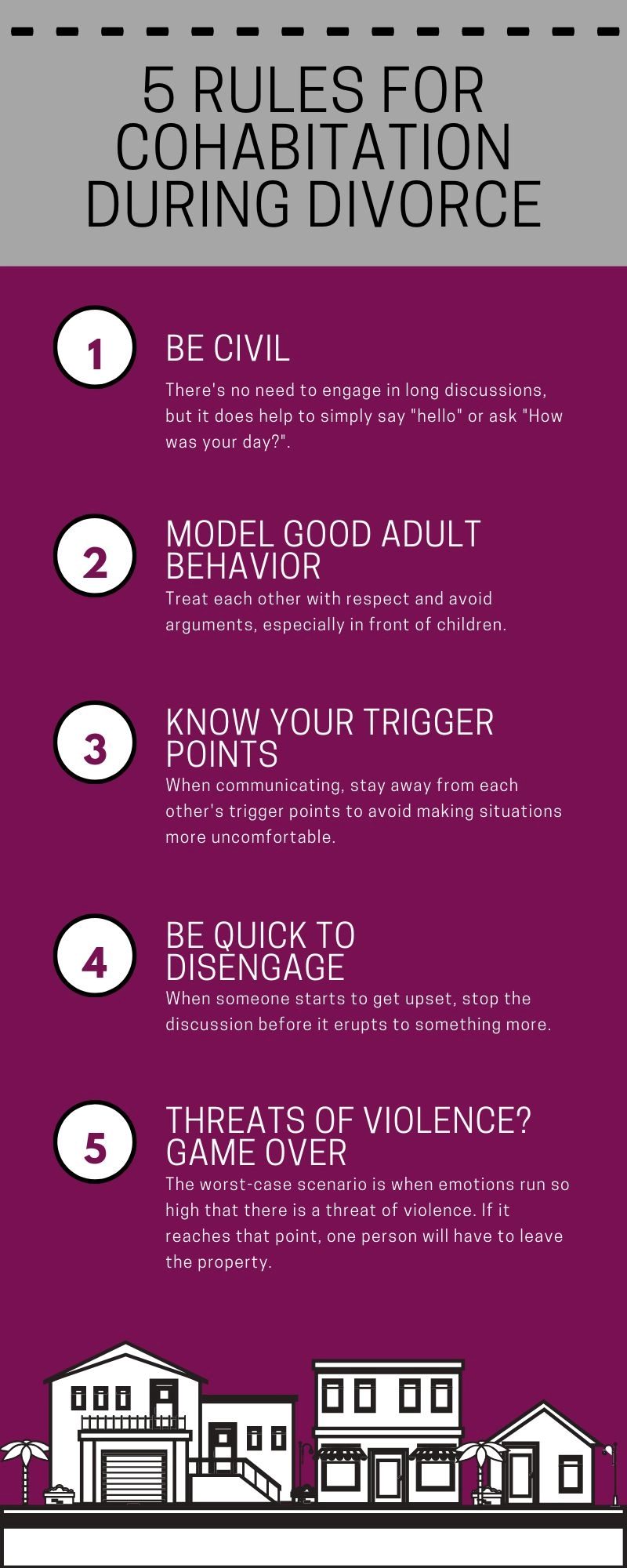FAQ
Is Cohabitation During a Divorce Possible?
A very common family law issue occurs when both parties continue to live in the family residence. This is called cohabitation.
Note that before the final judgment is entered, the court has no authority to order one of the parties to vacate the property unless the court finds that one party has engaged in conduct which allows the court to do so. (California Family Code 6321).
In a cohabitation situation, in addition to issues related to property division and child custody, there are the far more dangerous and problematic issues caused by the emotions of the parties. Spouses who are separating must know and follow rules of conduct for when they are living under the same roof.
Five rules of conduct for cohabitation
1. Treat the other party with civility. You do not need to engage in any long discussions or delve into the depths of one’s day, but it does help to simply say “hello” and ask, “How was your day?” If the other party does not wish to engage or answer, respect that refusal/denial and move on.
2. Model good adult behavior. Abandonment does not occur by simply vacating the property. However, if a party does move out of the family residence, the children are often likely to remain in the family residence as that is familiar and comfortable. Therefore, if you are remaining in the family residence to try to ensure contact with the children, then it is important to note that the children will be watching you. Treat the other parent with respect and avoid arguments, especially in the presence of the children.
3. Know your trigger points. Parties seem to believe that they will be able to communicate better during the divorce than they did during the marriage. This is highly unrealistic. Each party is fully aware of the other’s trigger points. Stay away from those. It will only make an uncomfortable situation even more uncomfortable. You may think you are able to convince anyone, especially your spouse, that your position is correct. However, if you are engaged in the divorce process, you are probably not as good as you think.
4. Be quick to disengage. The worst thing that cohabiting spouses can do is get angry with each other. If you are having a conversation and you sense that you are getting angry, there is a good chance that your spouse is feeling the same emotions. When that occurs, realize what is happening, and stop the discussion before it erupts into something more. It is perfectly acceptable (and wise) to simply state, “Let’s agree to disagree” and then stop the discussion at that point.
5. Threats of violence? Game over. The worst-case scenario is when emotions run so high that one or both of the spouses uses threats of violence or any kind of physical violence against the other party. If a person reaches that point, he or she has lost the battle. Engaging in such conduct most likely results in an order to vacate from the property.

